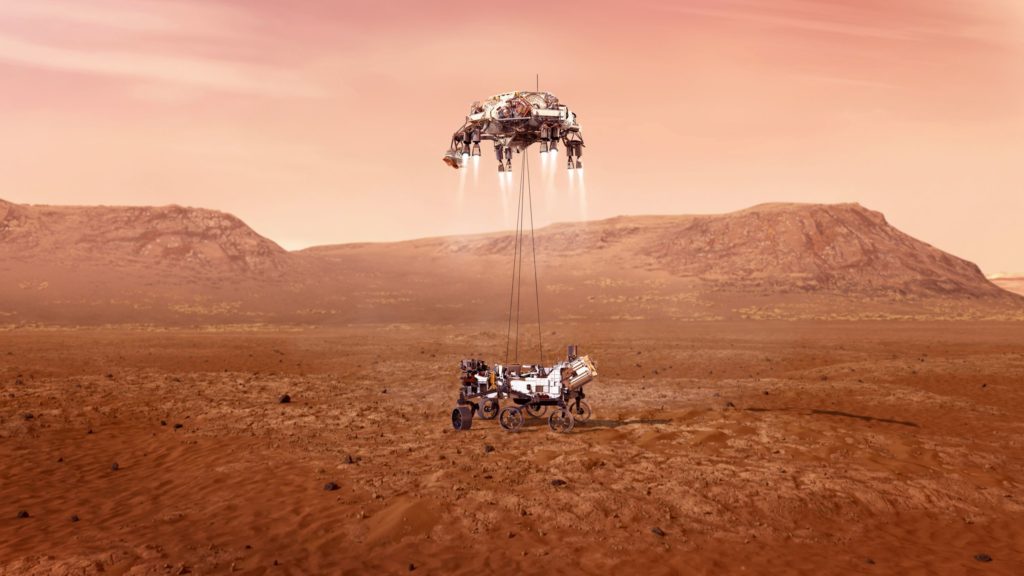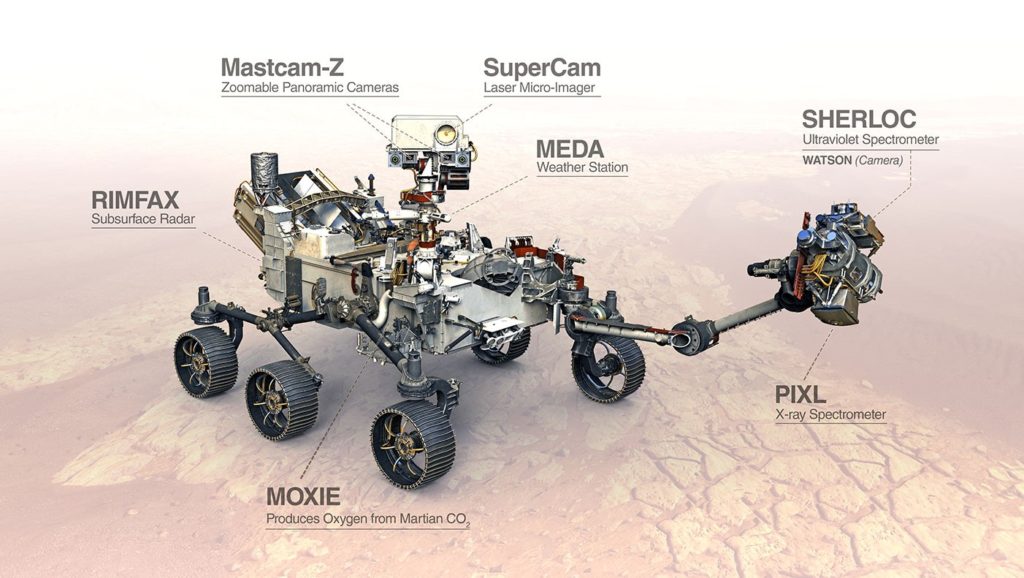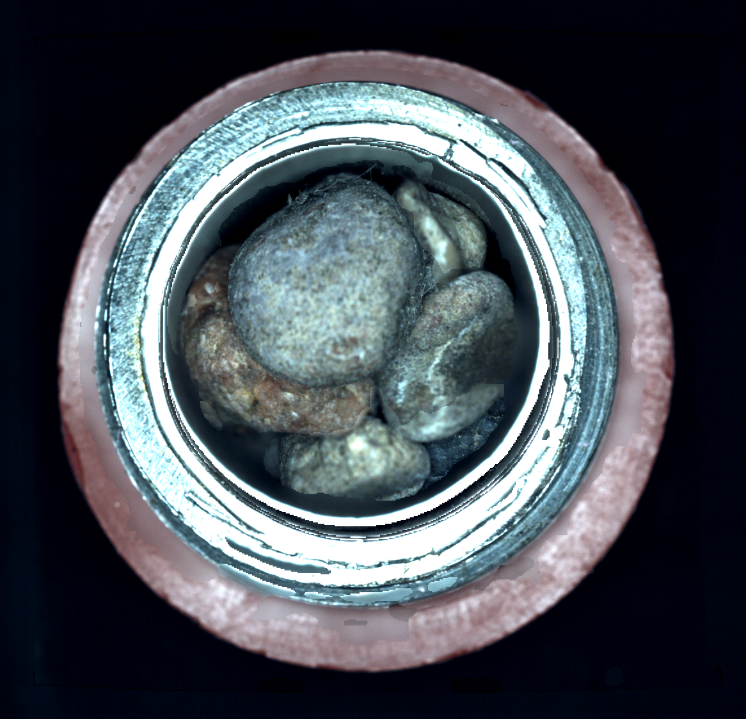
On July 30, 2020, NASA launched the Mars 2020 Perseverance rover, which is scheduled to land today. Perseverance has been deployed to Mars with a new mission: to search for evidence of past life and collect samples that will eventually be brought back to Earth by future missions.

According to NASA, the Perseverance Mars mission “takes the next step by not only seeking signs of habitable conditions on Mars in the ancient past, but also searching for signs of past microbial life itself.” The Perseverance rover is similar in size and design to the Curiosity rover – about the size of a compact car –but features new camera systems to facilitate rock and soil sample collection.
One of these is the Mastcam-Z instrument, which functions as the rover’s mast-mounted scientific “eyes.” The “Z” in Mastcam-Z stands for “zoom.” It represents a milestone in the history of space exploration: it’s the first zoom lens system to be included on a deep space instrument.
Mastcam-Z: Powerful Zoom Capabilities
The Mastcam-Z instrument is an update of the Mastcam instrument on the Mars Curiosity rover. It will perform several key functions:
- Scanning the landscape on Mars to help scientists understand the terrain.
- Assessing atmospheric and astronomical conditions.
- Helping scientists identify and characterize materials for rock and soil sampling.
Mastcam-Z is capable of producing multispectral, stereoscopic images. With its powerful zoom, it will help scientists see small features on the Mars landscape from far away. To give an idea of its power, it is capable of resolving features as small as 3cm from a distance of 100m.
Synopsys optical engineers partnered with Malin Space Science Systems and Arizona State University to design the Mastcam-Z zoom lens system using Synopsys’ CODE V optical design software. There were many technical challenges to resolve. The lenses needed to be well corrected over an extended visible spectral range and needed to operate over at least a 3x zoom range while being able to focus from close to the rover out to infinity. The lenses also had to operate over a large temperature range, including extreme temperature gradients. This set of operating conditions required substantial design effort as well as extremely detailed analyses. Synopsys optical engineers needed to show that the lenses could be successfully fabricated and that they would function over all the operating conditions.
Dr. Jim Bell, principal investigator at Arizona State University, commented, “The Mastcam-Z science and instrument development teams were extremely pleased with the high level of technical skill and support provided by the Synopsys team designing the zoom lens system. The result is an amazing pair of cameras that are expected to give us high resolution color and even 3-D views of Mars.”
Dr. Michael Ravine, advanced projects manager at Malin Space Science Systems, said, “Synopsys supported the Mastcam-Z development from the proposal through our final testing. We were pleased with how well the zooms worked under simulated Mars conditions, and we’re looking forward to seeing them actually working on Mars.”
Dr. Blake Crowther, principal optical engineer at Synopsys Optical Solutions Group, said, “One of the biggest challenges associated with designing lenses for use in interplanetary missions is the multivariate nature of their operating environment — coupled with the fact that they must work the first time and every time without human attention. This is compounded when designing a zoom lens that must function over a significant range of object distances. The amount of detail that the designer must keep in mind over the design process is incredible. In every phase of the design, the optical engineer needs to be able to communicate complex design trades and detailed analyses results to a large and diverse review community, which is no small endeavor. It was an honor to design such a lens with the talented team assembled for the job. It was also fun.”
Illuminating Sample Collection
Another updated camera system on the Perseverance Mars rover is the CacheCam, one of several engineering cameras on board. The CacheCam is located underneath Perseverance and takes pictures of sampled materials as they are being prepared for sealing and caching. Synopsys optical engineers contributed to the design of illumination optics on the CacheCam.
The CacheCam includes a fixed illuminator (no moving parts) to provide close to uniform illumination of the materials throughout the collection process; at the beginning, the samples are far from the imaging optics and, at the end, the samples are much closer. In addition, the illuminator has to account for the presence of dust on the outer surface of the optics, as well as on the inner surfaces of the collection tube.
Simon Magarill, one of the engineers who worked on the CacheCam design, noted, “The requirement to include the dust in the analysis and design process required a lot of calculations to account for different sizes and concentrations of scattering particles. We developed a systematic approach to design an illuminator that provides optimum performance in such challenging conditions.”

Learn More
A great place to start learning more about the Mars 2020 Perseverance rover is the mission overview on NASA’s website at https://mars.nasa.gov/mars2020/mission/overview/.
References
- NASA 2020, Mars Perseverance Mission Overview, viewed 16 August 2020, <https://www.nasa.gov/perseverance/overview>
- NASA 2020, NASA, ULA Launch Mars 2020 Perseverance Rover Mission to Red Planet, viewed 16 August 2020, <https://www.nasa.gov/press-release/nasa-ula-launch-mars-2020-perseverance-rover-mission-to-red-planet>
- NASA 2020, Mastcam-Z for Scientists, viewed 16 August 2020, <https://mars.nasa.gov/mars2020/spacecraft/instruments/mastcam-z/for-scientists/>
Also Read:
Verification Management the Synopsys Way
Synopsys Debuts Major New Analog Simulation Capabilities
Accelerating Cache Coherence Verification
Share this post via:





Comments
There are no comments yet.
You must register or log in to view/post comments.